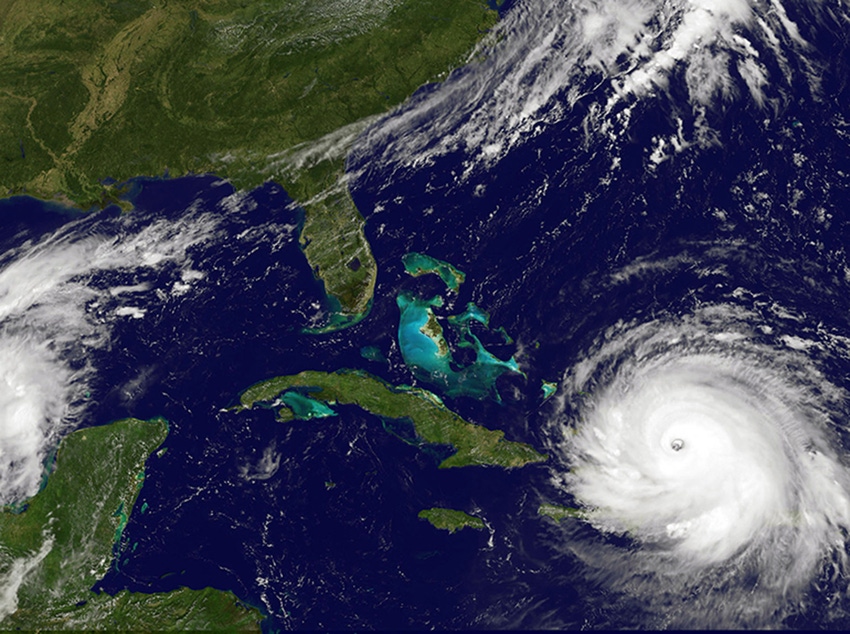Taking precautions prior to a natural disaster cannot prevent the storm, but these steps can make the aftermath easier to handle.
September 7, 2017

No one ever wants a disaster to hit their farm, but preparedness is key to enable a hog operation to overcome adversity should a crisis strike. Hurricane Irma is damaging Caribbean nations, and has Florida and other southeastern U.S. states in its sights. Here are 10 tips for hog producers who may be in harm’s way.
1. Have a farm emergency plan in writing
Most state departments of agriculture or agricultural organizations within states offer templates that producers can use to write their own emergency plans. Knowing who to contact in the event of an emergency is imperative, but finding the proper contacts in the heat of a crisis can prove difficult. North Carolina Department of Agriculture and Consumer Services’ template for a Farm Emergency Plan has forms for you to organize all of the pertinent telephone numbers of emergency services in the case 911 is not working (fire, police, local animal control) as well as businesses that need to be contacted in the event of a disaster (gas company, phone company, electric company, etc.).
In addition to knowing who to contact, it is equally important to make it easy for emergency personnel to find you. Also included in the NCDACS template is a form for producers to put directions to your farm from the nearest major road or highway, as well as including landmarks or other defining features that may be visible from the air if assistance will be coming from above.
In addition to the farm’s physical address, it may also be beneficial to responders to have the township, sector or quadrant, as well as GPS coordinates. It can be difficult to know these right off hand, especially in the middle of a crisis. Have these written down and kept in a safe place, informing your farm staff where the plan is located.
2. Have emergency equipment on hand
With a hog operation’s reliance on electricity to feed and water the animals in barns, it is important to have a back-up generator on hand and ready to go should the electricity be lost. Since no one knows how long a power outage may last, it is recommended to have a good supply of fuel for the generator on hand. It is also suggested to have a hand fuel pump. Make sure to have a transfer switch properly installed so that you can use the generator without potential harm to your farm’s facilities and utility workers.
3. Have ample feed and water supply
Again, since no one can foretell the duration of a crisis it is suggested to plan ahead to have feed bulk bins full so that your hogs can ride the storm out on full stomachs.
4. Properly secure your property
Prepare your property in advance if your area is prone to disastrous weather patterns. This involves clearing debris from drainage ditches so water may run freely, taking special care to also prevent erosion in large rain events. Check all of the buildings and their surroundings on your farm site. Old or damaged trees near barns or your home may need to be trimmed or removed to prevent them from damaging the structures. Also check the condition of the buildings; a few extra nails or tighter hurricane strapping can limit further damage.
5. Review your business
The worst time to find out that you don’t have enough, or the right, insurance to cover your damages is when you need help recovering. Review your insurance policies on a regular basis to be sure you have adequate coverage for homeowners, vehicles, farm buildings and structures, crops and flood. Have all your agents’ contact information ready.
6. Plan animal care
If it is impractical to move livestock, designate crews tasked with caring for the animals during the storm. Though livestock care is important, an impending storm may force caregivers to evacuate the farm, so make sure your family and barn staff know the proper evacuation routes. It’s also important to have a plan of where they should go for safety.
7. Assess the situation
Once the storm passes, and it is safe to venture outside, activate your emergency plan. Be sure to protect yourself as you assess the storm damage, wearing sturdy shoes or boots and gloves as you handle debris that may have scattered around your site.
8. Take inventory of your farm
Take detailed notes and photos for insurance purposes. (Consider downloading an app to your smartphone, such as the North Dakota State University Disaster Recovery Log, to help with the inventory.) In the case of a hurricane or other weather that creates widespread damage, your farm is probably not the only one to receive damage. With this in mind, you will want to report your losses to your insurance agent as soon as possible.
9. Practice safety first
Storms such as hurricanes and tornadoes pack quite a wallop with high winds that can cause downed trees and power lines. Use extreme caution around downed power lines, and it’s best to contact your electricity provider whose number should be in your farm’s emergency plan.
10. Know where to turn
Even a thorough farm emergency plan may not answer all your questions in a storm’s aftermath. If you still have questions or concerns, turn to your county or state Emergency Management Office. Your county or regional Extension office should be able to help you get in touch with an expert to help you pick up the pieces after a storm hits your area.
You May Also Like



